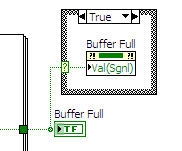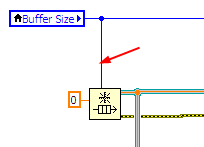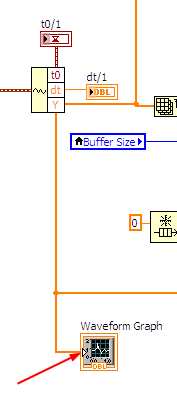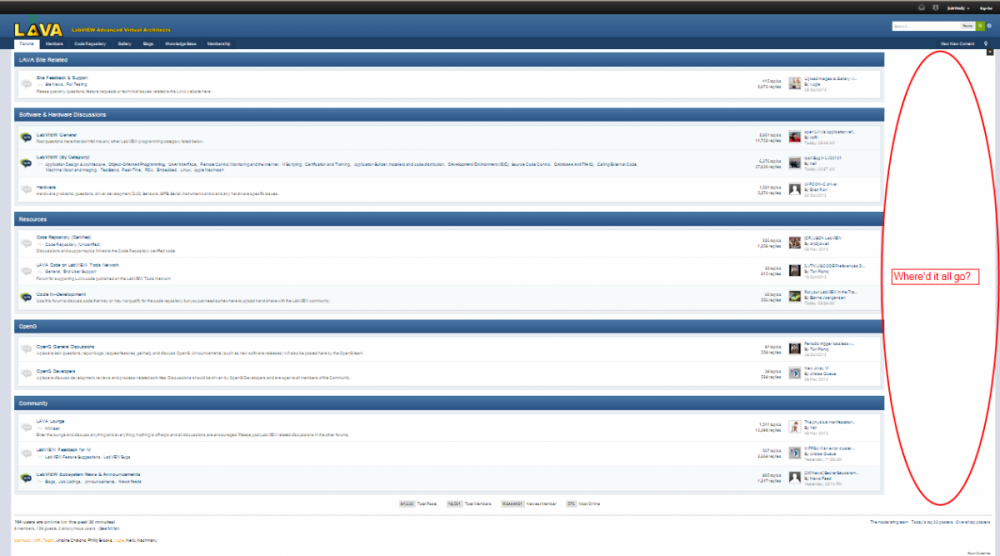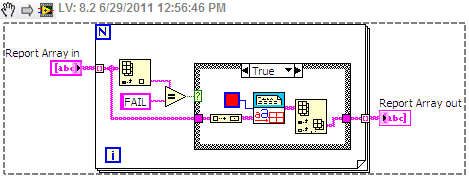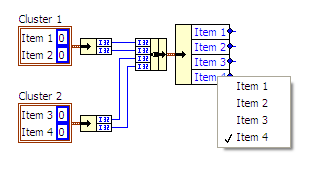-
Posts
951 -
Joined
-
Last visited
-
Days Won
39
Content Type
Profiles
Forums
Downloads
Gallery
Everything posted by jcarmody
-

How to Retail Wire Values for ENTIRE VI Hierarchy
jcarmody replied to curiouspuya's topic in LabVIEW General
I'd be upset if someone stole my bike, regardless of whether or not they cleaned and tuned it up before returning it. On the other hand, I'd be pleased as punch if someone took and used some software I've written (even if they didn't return it). The presence of a BD password indicates that the author doesn't share our sentiment. Your bicycle example illustrates one of the problems I have with "intellectual property": you can lock (and someone else can steal) a bike but It's impossible to "steal" software because the original "owner" hasn't lost anything. Keep up the good work.- 33 replies
-
- block diagram
- retain wire values
-
(and 1 more)
Tagged with:
-

How to Retail Wire Values for ENTIRE VI Hierarchy
jcarmody replied to curiouspuya's topic in LabVIEW General
I didn't notice Neal's post until now. Neal, aren't you worried that someone will accuse you of stealing someone's bicycle?- 33 replies
-
- block diagram
- retain wire values
-
(and 1 more)
Tagged with:
-

How to Retail Wire Values for ENTIRE VI Hierarchy
jcarmody replied to curiouspuya's topic in LabVIEW General
Put these files in <LabVIEW>resourcedialogQuickDropplugins and Bob will be your Quick-Dropping uncle. Ctrl-space, Ctrl-e will activate the plugin. It'll ask you for Right Click API.llb, so you'll have to have the RCF installed somewhere. (It'll be in <LabVIEW>vi.libaddons_JKI ToolkitsRCF API). These are type-defs for a control on the password-protected VI Vishal Devanath gave us. Now, as far as Flarn2006 hacking it for us, most of us can get at the block diagram without much effort but it's "wrong". QD_RetainWireValues.vi Retain All Wire Values core.vi- 33 replies
-
- 1
-

-
- block diagram
- retain wire values
-
(and 1 more)
Tagged with:
-

How to Retail Wire Values for ENTIRE VI Hierarchy
jcarmody replied to curiouspuya's topic in LabVIEW General
If he hadn't password-protected the block diagram, it would be pretty easy to convert it to a quick-drop plugin.- 33 replies
-
- block diagram
- retain wire values
-
(and 1 more)
Tagged with:
-

"Fake Exec State" - an interesting private method
jcarmody replied to Sparkette's topic in LabVIEW General
I wonder why this method exists; it looks like an inside joke. -

What If Cars Were Rented Like We Hire Programmers?
jcarmody replied to Antoine Chalons's topic in LAVA Lounge
Interviewer #1: Have you driven before? Me: Yes. I have a license, and everything. Interviewer #1: Let me show a car I'm currently driving. I'm sure you know how this one works? Me: I'm confident I could figure it out. Let me look at it... Interviewer #1: Never mind. Let me show you some of the cars we need driven. Me: -
Your second mistake was in wiring the buffer size to the max queue size of the obtain queue node. The top loop is filling the queue with five elements and waiting for the bottom loop to respond, which it never does because of the way an Event structure works (see below). Your third mistake was in thinking that the event structure would respond to a change in the Buffer Full indicator. You could use a Value (Signaling) Property node to accomplish this: Your first mistake was your archetecture; take a look at the Producer-Consumer design pattern. Your VI will run if you change the two things I've mentioned, but it'll take forever to finish. If only I had finished my Algorithms course... You could do this, and your graph will fill instantly.
-
I noticed this yesterday at work and at home. Did I accidentally remove these or is this a bigger issue? I'm accustomed to seeing the reputation count and status updates.
-
-
Have you considered NI's Third-Party Licensing and Activation Toolkit?
-
Here's a single VI (so you don't need the extra folder in <LabVIEW>\projects) that's been cleaned a bit. ReqHatch.vi Boo.
-
- 6 replies
-
- references
- clusters
-
(and 2 more)
Tagged with:
-
It's not finding [Covers <id>] tags in any SubVIs. I can't remember if this ever worked (it seems to me that it did) or if TRef Traverse for References.vi has changed in LV2012. Anyway, this attachment finds the missed tags (in a most inelegant manner). Dror, this addresses some of the issues you raise in item 2 of your post. Also, there aren't any mistakes in I fixed the capitalization in my other post. RequirementsHatchway.zip
-
Nope. I don't mind. So do I.
-
It's not finding [Covers <id>] tags in dynamically dispatched VIs saved in an llb.
-
Here's something you can try. I just got it working this afternoon and haven't tested it enough since drastically changing the approach. unzip the attachment into <LabVIEW>\project restart LabVIEW put a "requirements.txt" file in the folder with your LabVIEW project the first line must be the name of the top-level VI (as a relative path from the project's folder) the second line must be blank the third and subsequent must be the requirement ID followed by a tab then the requirement description put free labels in your VIs in the form of [Covers <id>] run Requirements Hatchway from the Tools menu profit Tell me how it goes. By the way - this is only in LabVIEW 2012 because I can't manage to save it to a previous version. All I get is a folder with its dependencies, but no main VI. I'll try from home in case this is an issue with my installation. RequirementsHatchway.zip
-
I've made CaseSelect into a Quick Drop plugin - https://decibel.ni.com/content/docs/DOC-24058
-
We have your blog in our feed-readers anyway.
-

Auto-show/hide tree scrollbars - supporting multiple child text items?
jcarmody replied to Mads's topic in User Interface
-
-
I've seen that, only the line was black and there were fewer data points. Somehow my mind wandered from here to an old Isaac Asimov short - The Feeling of Power I made some progress last night re-reading the material and reviewing some of the lectures, but I may always feel like this technician.
-
Yes, Sedgewick is using his book for this course. I'd read it.


